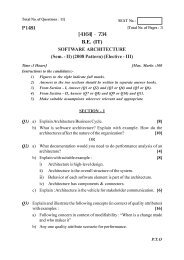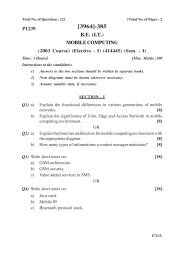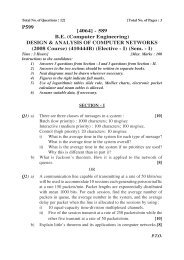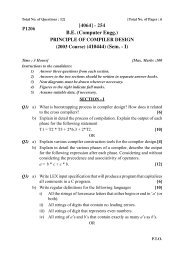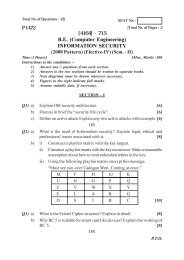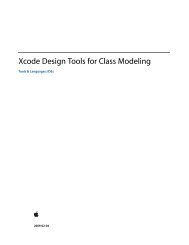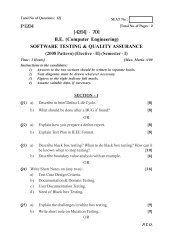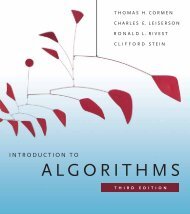Cloud Computing and SOA Convergence in Your Enterprise: A Step ...
Cloud Computing and SOA Convergence in Your Enterprise: A Step ...
Cloud Computing and SOA Convergence in Your Enterprise: A Step ...
Create successful ePaper yourself
Turn your PDF publications into a flip-book with our unique Google optimized e-Paper software.
When <strong>Cloud</strong> <strong>Comput<strong>in</strong>g</strong> Fits 189<br />
tions of the bus<strong>in</strong>ess, <strong>and</strong> thus you are ready to look at cloud comput<strong>in</strong>g.<br />
This is a bit of a sidetrack when look<strong>in</strong>g at the architectural components of<br />
services, processes, <strong>and</strong> data as c<strong>and</strong>idates for cloud comput<strong>in</strong>g, but it is<br />
nonetheless important when you consider that you should not replatform an<br />
architecture to or build new applications on cloud comput<strong>in</strong>g platforms unless<br />
you have healthy enterprise architecture.<br />
Those look<strong>in</strong>g to fix bad enterprise architecture simply by relocat<strong>in</strong>g<br />
portions of it to cloud comput<strong>in</strong>g platforms will f<strong>in</strong>d they only make their<br />
issues worse. When look<strong>in</strong>g to leverage cloud comput<strong>in</strong>g, you should first<br />
have your house <strong>in</strong> good order, mean<strong>in</strong>g that the <strong>in</strong>ternal architecture is <strong>in</strong> a<br />
good optimal state. In many <strong>in</strong>stances, architects view cloud comput<strong>in</strong>g as a<br />
“quick fix” for architectural issues, <strong>and</strong> it actually makes th<strong>in</strong>gs more complex<br />
<strong>and</strong> difficult to manage, <strong>and</strong> it <strong>in</strong>creases the likelihood of bus<strong>in</strong>ess systems<br />
failure.<br />
When the Browser Is the Desired User Interface<br />
When the browser is the desired user <strong>in</strong>terface means many cloud comput<strong>in</strong>gbased<br />
systems, such as <strong>in</strong>frastructure-as-a-service <strong>and</strong> platform-as-a-service,<br />
leverage browser-based <strong>in</strong>terfaces as the preferred mechanism to <strong>in</strong>teract<br />
with a user. These days, most browser-based applications are rich Internet<br />
applications (RIAs; see Book Blog) <strong>and</strong> have the ability to behave <strong>and</strong> appear<br />
native despite runn<strong>in</strong>g with<strong>in</strong> a browser.<br />
The l<strong>in</strong>e between on-premise browser-based applications <strong>and</strong> clouddelivered<br />
browser-based applications is pretty blurry right now, so there is a<br />
lot to th<strong>in</strong>k about here. We are simply mak<strong>in</strong>g the case that if the application<br />
lives <strong>in</strong> a browser, which many already do, then cloud comput<strong>in</strong>g has some<br />
additional benefits.<br />
<strong>Cloud</strong> comput<strong>in</strong>g applications leverage Web-based <strong>in</strong>terfaces because<br />
they are serv<strong>in</strong>g up applications over the Internet that support platform <strong>in</strong>dependence<br />
by leverag<strong>in</strong>g the browser as the common denom<strong>in</strong>ator. However,<br />
<strong>in</strong> some cases, end users want to leverage the native user <strong>in</strong>terfaces,<br />
such as W<strong>in</strong>dows or Mac, <strong>and</strong> do not want to leverage a browser. With the<br />
advent of RIA <strong>and</strong> the pervasive use of the browser as the common user <strong>in</strong>terface,<br />
native user <strong>in</strong>terfaces are not as likely to be widely available <strong>in</strong> the<br />
clouds.



